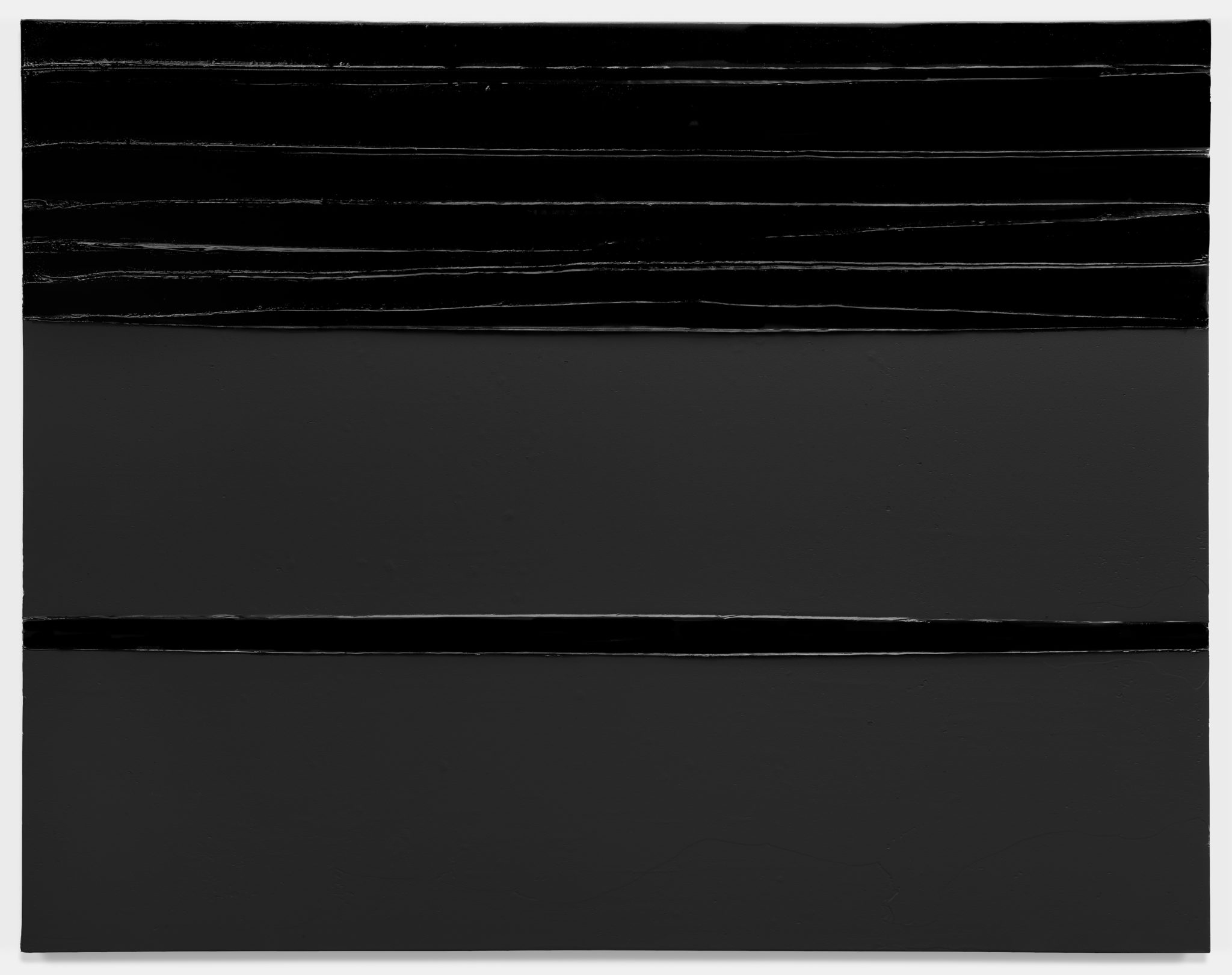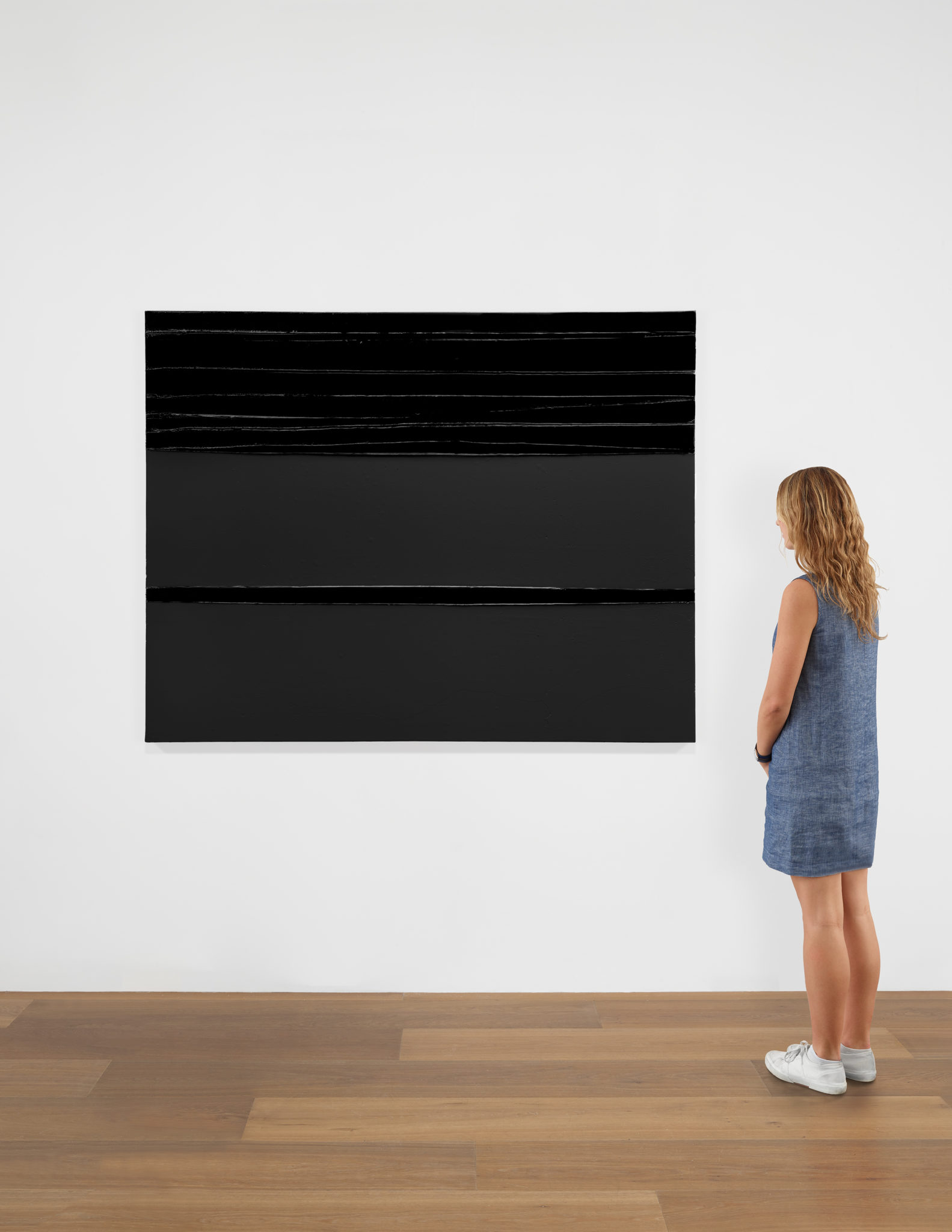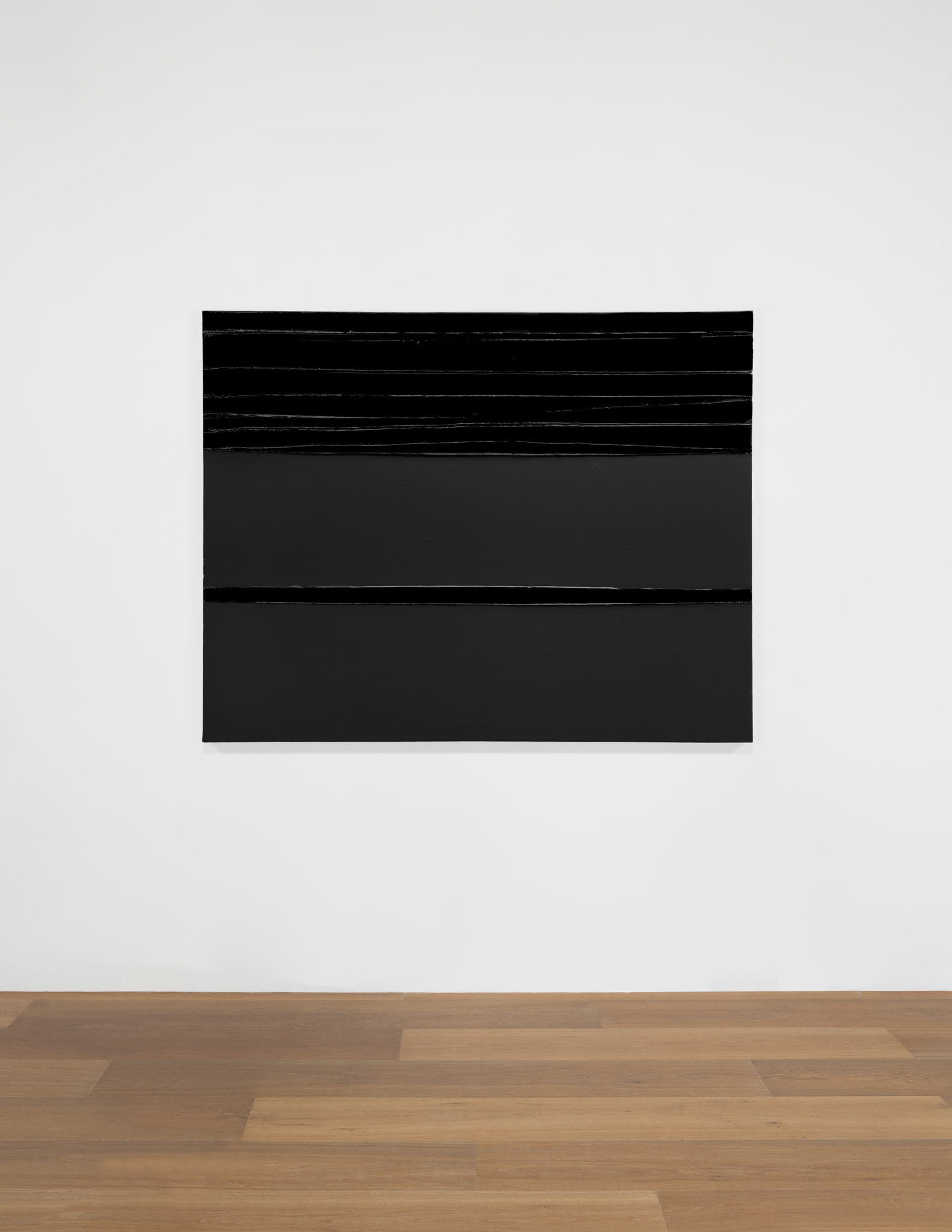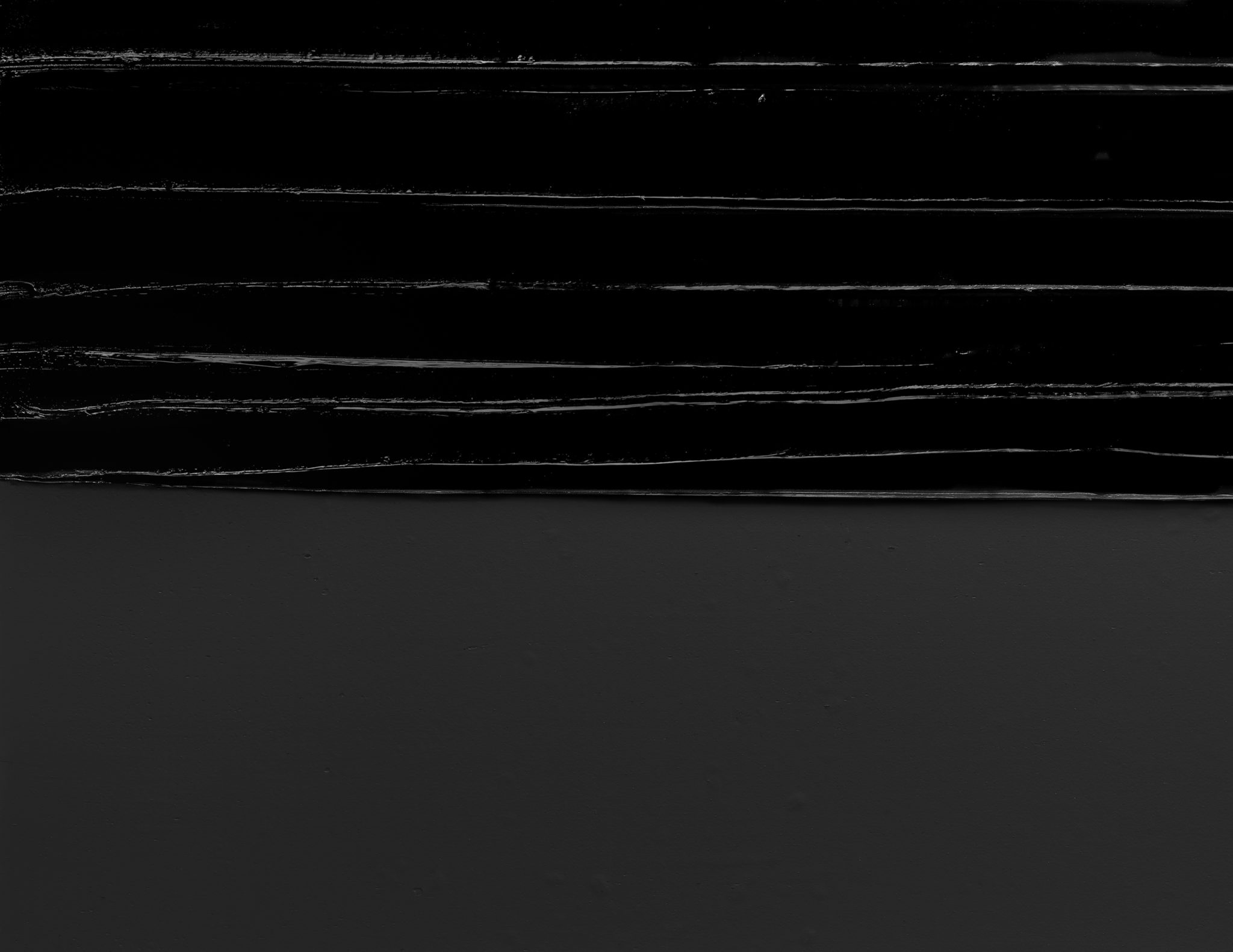Pierre Soulages
Peinture 130 x 165 cm, 1 septembre 2019, 2019
Acrylic on canvas
51.18 x 64.96 inches (130 x 165 cm)
© Artists Rights Society (ARS), New York / ADAGP, Paris
Black is before light. Before light, the world and its things were in total darkness. With light were born colors. Black is before them. Also before each of us, before being born, ‘before having seen the light of day.’ These notions of origin are profoundly buried in us. Is it for these reasons that black touches us so powerfully?
—Pierre Soulages, 2005
The inception of Pierre Soulages’s Outrenoir series can be traced to 1979, when the artist was in his studio, grappling with a painting he felt was incomplete: “I was unhappy, and because I thought it was pure masochism to continue, I went off to sleep. When I woke up, I went to look at the painting. I saw that it was no longer the black that brought the painting to life but rather the reflection of light on the black surface.” While his earlier works had already emphasized the use of black ink or paint, Soulages would, from this point on, completely cover his canvases with textured black pigments, inaugurating a philosophical inquiry into the existential beyond: “Outrenoir doesn’t exist in English; the closest is ‘beyond black.’ In French you say ‘outre-Manche’ to mean England or ‘outre-Rhin’ to mean Germany. In other words, “beyond black” is another country from black.”
“A painting is an organization,” Soulages wrote in 1974; “a set of relationships between shapes, lines, and colored surfaces, on which the meanings we give it are made and unmade.” In line with the existence of his paintings as subjective extensions of experiential reality, Soulages has titled his paintings with the dimensions of the support and the date of completion for the past six decades. Thus, Peinture 130 x 165 cm, 1 septembre 2019 is a unique construction, one that does not correlate to a sensory or conceptual referent, but one that registers the consequences of the gestures of its creation and a perpetually ongoing source of visual interaction. The work firmly establishes the possibility of knowledge without dictating what that knowledge should be, leaving that undertaking to the viewer.
Born on December 24, 1919, in Rodez (south of France), Soulages, who continues to produce work at a steady pace, celebrated his 100th birthday at the end of last year. To mark this event, the Musée du Louvre devoted an exhibition to the artist in the prestigious Salon Carré, which used to house the Paris Salon. This tribute exhibition, which has just closed in March, set out to trace the development of Soulages’s work from 1946 to the present day, through a selection of works created over eight decades. The exhibition covered every period, with a focus on the Outrenoir polyptychs. It also presented a number of very large paintings executed in the months leading up to the exhibition, demonstrating the remarkable vitality of Soulages, who has never stopped working.




